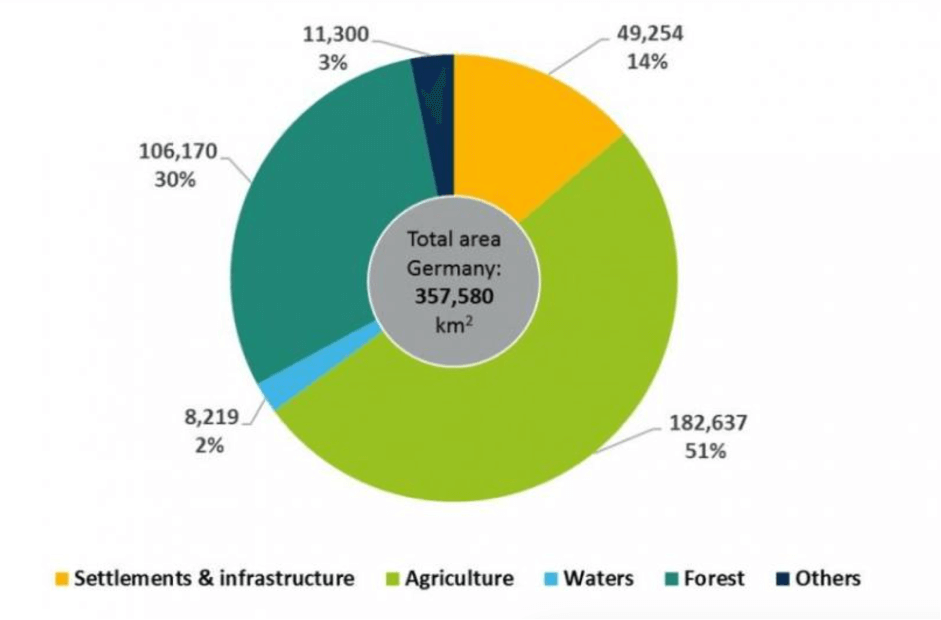On our path to net zero, nature-based solutions provide a chance to reduce and avoid many carbon emissions. By 2050, these solutions will save up to 10 gigatons of CO2 worldwide. Many of these initiatives are developed and implemented in countries from the Global South, such as the Congo, Brazil, or Indonesia, as these countries are rich. Rainforests can store much more carbon than the forests in Germany, for example, as the trees in temperate rainforests are much bigger.
Germany, not primarily known for its distinctive forests, apart from the Black Forest and the Bavarian Forest and parts of Brandenburg, the state surrounding Berlin, has a forest cover of approximately 30% of its total land area, which equals about 11.4 million hectares, or roughly the size of South Korea. The country’s forests are crucial in carbon sequestration, biodiversity conservation, and climate adaptation. The most common tree species are spruce, pine, beech, and oak. Germany has strong forest management policies, with about 48% of its forests certified under sustainable forestry schemes like FSC and PEFC, aiming to prevent cutting trees, among others.

Figure 1: Land use in Germany; Source: Statistisches Bundesamt (2016)
Apart from conserving forests, other nature-based solutions include agriculture, wetlands, and coastal and marine habitats. In Germany, especially the latter two hardly play a role, whereas reforestation and agriculture are more prominently served for carbon sequestration through nature-based solutions. Germany has pledged over €3.5 billion, approximately $3.89 billion, towards nature-based solutions for climate and biodiversity initiatives. This funding will be allocated until 2028, underscoring Germany’s commitment to leveraging natural processes to address environmental challenges. Especially agricultural land, which covers about half the size of Germany’s land, can help store carbon in its soil. In late 2014, Germany opened the National Soil Monitoring Centre at the German Environment Agency to help gather data on the country’s soil condition. This will also help to evaluate the degree of carbon in the soil.
Conserving forestry and agricultural land not only helps mitigate climate change and protect biodiversity, but it can also generate additional income by generating carbon credits. Some German-based startups directly promote nature-based solutions in the country, leading to the generation of carbon credits. However, a larger amount of those credits will more likely be bought from projects in other parts of the world to compensate for Germany’s emissions, according to Article 6 of the Paris Agreement. Moreover, the country’s renewable energy expansion through the extensive investment in solar and wind energy provides a much larger impact on emissions reduction than the internal adaptation of nature-based solutions.
Nature-based solutions are an essential complementary tool, but not the main driver of emissions reductions in Germany. They provide additional benefits like biodiversity conservation and climate resilience but require significant scaling to match the impact of energy and industrial decarbonization efforts.
This Post was submitted by Climate Scorecard Germany Country Manager Maximilian Block.

